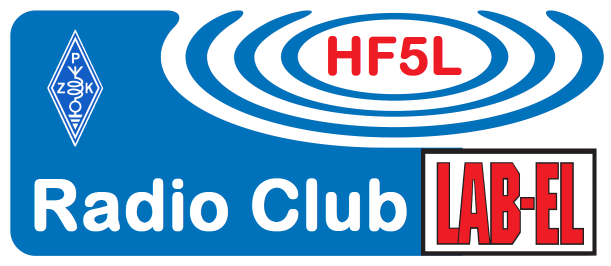 On February 15, 2019, in the HF5L club we hosted Piotr SP5ULN, who won the first prize for the largest number of received frames from the PW-SAT2 satellite.
On February 15, 2019, in the HF5L club we hosted Piotr SP5ULN, who won the first prize for the largest number of received frames from the PW-SAT2 satellite.
Piotr gave a presentation on “Is there anything interesting above 100 MHz?”. The main part of the presentation was devoted to the description of the actions that radio amateurs can undertake on frequencies above the generally understood KF.
At the beginning, SP5ULN presented the issues connected with the satellite radio communication: historical outline, initial characteristics and types of satellites and orbits, hardware requirements, basic operator issues.
The second type of radio communication discussed was the meteor scatter. The basic digital communication technique was discussed, as well as the possibility of conducting simple experiments with the Graves radar.
EME radio communications was also discussed in terms of the use of digital modes. It was shown how this communication works and how to distinguish EME contacts from non-EME. In addition, the basic tools supporting EME radio communication have been shown (including N0UK chat, “moon propagation” charts). The problem of so called “deep search” has been discussed.
The follow-up activities are of a listening nature. Among them discussed were:
– listening and collecting telemetry from satellites such as: AO-73, UKube-1, Nayif-1, satellites of the Fox series;
– reception of data from stratospheric balloons;
– amateur reception of interplanetary probes – Amateur Deep Space Network;
– experience in receiving the LuxSpace 4M moon mission in 2014;
– team activities (including: SP5MG, SQ5KTM, SQ5RWU, SP5ULN) in the field of data collection from Japanese ARTSAT2 and Shin-En 2 probes (reception of telemetry data from a distance of almost 3 million km), in 2014;
– operator’s how-to on telemetry reception page from the Chinese lunar probe DSLWP (currently in orbit of the Moon);
– operator’s techniques for telemetry reception from the Polish PWSat2 satellite;
– preliminary issues related to work on the geostationary satellite Es’hail 2 (QO-100): reception and broadcasting, hardware side;
– SSTV reception from ISS.
Finally, more important links to websites related to the subject matter were indicated:
QSO SAT
ORBITRON – satellite tracking http://www.stoff.pl
PST Rotator – rotor control https://www.qsl.net/yo3dmu/index_Page346.htm
Satellite orbits data source https://www.celestrak.com/NORAD/elements/
Meteor Scatter and EME
WSJT and others – jt65, FSK etc. https://physics.princeton.edu/pulsar/k1jt/
Radar for Meteor Scatter http://www.meteorscan.com/meteor-live.html
Stratospheric balloons
DL – Fidigi HAB Mode e.g. http://sp9uob.verox.pl/rtty_tracking.html
SSTV
MMSSTV – SSTV decoder e.g. https://www.qsl.net/kf6ypq/mmsstv.html
Other
Spectran – waterfal weak signals http://www.sdradio.eu/weaksignals/spectran.html
Sources of interesting news
AMSAT-UK https://amsat-uk.org
AMSAT-DL https://amsat-dl.org
AMSAT-NA forum http://www.amsat.org/pipermail/amsat-bb/
APRS maps – propagation at 2m and APPS at http://aprs.mennolink.org
Twitter: BG2BHC, SQ5KTM, UHF Satcom
SP5ULN provided the participants with an article printout detailing the reception of data from the Japanese ARTSAT2 and Shin-En 2 probes.
In the discussion after the presentation, mainly hardware issues were discussed and some details were explained in the field of operator issues.

Leave a Comment